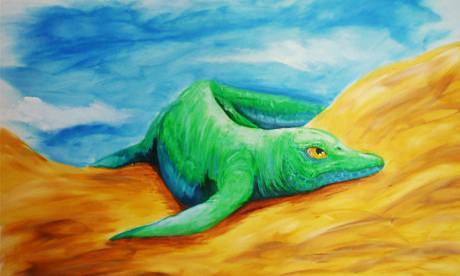Scientists discovered the first fossil of the amphibious ichthyosaur was discovered in China.
The discovery links the dolphin-like creature to its terrestrial ancestors, and fills a gap in the fossil record, the University of California, Davis reported.
The remains are around 240 million years old, dating from the Triassic period, and measure roughly one and a half foot long.
Lead author, Ryosuke Motani, explained that the fossil is of the transitional period, because “there’s nothing that prevents it from coming onto land.”
The fossil shows that the amphibious ichthyosaur had unusually large flippers, allowing for seal-like movement on land, and flexible wrists, which are essential for crawling along the ground.
Its nose was short and similar to that of other land reptiles, whereas most ichthyosaurs previously found have a long snout.
Another indicator of its place in the evolutionary timeline is that it has thicker bones compared to other ichthyosaurs. It is believed that marine reptiles who transitioned from land to sea became heavier first, so that they could swim through rough coastal waters before getting to deep sea.
The animal lived about four million years after the mass extinction of the dinosaurs, and scientists have often wondered how long plants and animals took to recover, especially as the extinction has been associated with global warming.
“This was analogous to what might happen if the world gets warmer and warmer,” Motani said. “How long did it take before the globe was good enough for predators like this to reappear? In that world, many things became extinct, but it started something new. These reptiles came out during this recovery.”
Agencies/Canadajournal
 Canada Journal – News of the World Articles and videos to bring you the biggest Canadian news stories from across the country every day
Canada Journal – News of the World Articles and videos to bring you the biggest Canadian news stories from across the country every day



